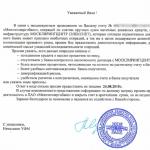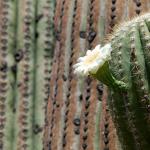Petunia is an absolute favorite among summer gardeners. In terms of popularity, distribution, and abundant flowering, this plant outshines any other competitors. Petunia seedlings flood store shelves from spring to autumn. Growing petunia from seeds yourself is not an easy task. But with some diligence and attention, you can create your own collection of petunias yourself.
Growing petunia seedlings from seeds. © Brittney Smart
Garden petunias (Petunia x hybrida or Petunia hybrida) are one of the most famous representatives of the nightshade family (Solanaceae). With a height of 10 to 100 cm, this herbaceous annual with well-branched, densely leafy, creeping or straight shoots allows you to choose larger or more compact varieties. Oval soft leaves with a solid edge, the shape and presence of a pointed tip, which may differ depending on the variety, sit alternately on the shoots. The beautiful edge emphasizes the light tone of the leaves.
The huge funnel-shaped gramophone flowers of petunias, with their regularity or irregularity and varied colors, are the main decoration of the plant. They create entire blooming clouds and cascades, but the beauty of each flower is mesmerizing. Blooming at the beginning of summer and not slowing down until frost arrives, petunia offers a considerable selection of colors, flower sizes, variations of multi-colored colors and ruffled edges, varying degrees of terry, and even corolla shapes.
The variety of petunias is so great that understanding the groups, varieties, classes and varieties is not easy even for experienced gardeners. But in terms of cultivation technology, all petunias are similar. When it comes to reproduction, all petunias are practically no different from each other. And grandiflora petunias, and multifloras, and nanas, and individual groups of petunias, and even fashionable new items are propagated mainly by seeds - by seedlings.
Petunia seeds: self-collection and purchase
After flowering (defloration), petunias begin to develop double-cavity cone-shaped fruit boxes just over a centimeter long, which turn golden brown as they ripen. It is by color that the timing of seed collection is determined, which on average is 4-8 weeks after the petunias have flowered.
There is no need to rush to remove seeds from fruit pods: their full ripening will occur only after 3 or even 4 months. Petunia fruits are laid out in a dark, ventilated place at standard room temperatures. After 4 months, the seeds can be removed, sorted, labeled and stored in paper bags protected from cold, heat, light and high humidity.
To get petunia seeds yourself, you need to leave some of the fading flowers on the plant. It is preferable to leave the lower buds, which are among the first to bloom. When collecting petunia seeds, it is better to be prepared for the fact that the offspring will not retain the characteristics of the mother variety and will surprise you with its variety of qualities. In order to collect seeds yourself, you also need to pay attention to three important nuances:
- To collect your seeds, you will have to select only varieties: sterile hybrids and double forms of seeds do not form, since as a result of selection, the ovaries of such petunias have been transformed into petals.
- Petunias are cross-pollinated plants; self-pollination occurs only in isolated cases.
- Pollination of non-double plants with pollen of varietal double petunias allows you to obtain some seeds with double flowers, but still the number of plants that have retained their characteristics will not exceed 30%. It is for this reason that it is recommended to buy seeds for terry varieties.
Hidden inside the box are surprisingly small seeds, which make planting very difficult. The diameter of dark brown petunia seeds that merge with the soil is slightly more than half a millimeter. Due to their tiny size, one gram of seeds contains up to 5-10 thousand potential plants (large-flowered varieties have slightly larger seeds than multi-flowered varieties). About a hundred seeds can be collected from one fruit, which is why petunias are rightly called one of the most prolific summer plants.
The number of petunia varieties is measured in the thousands. Choosing professional or “regular” petunia seeds is not an entirely simple task:
- First of all, you need to focus on decorative characteristics - characteristics of flowering, color, plant height, foliage density, shape and length of shoots, recommended use of a particular variety. Hanging varieties are used only for hanging baskets and cascades in boxes; in all other cases, bush varieties are preferred due to their dense tillering and good branching.
- When choosing petunia seeds, keep in mind that these plants have an average growing season of about 70 days. Small-flowered petunias bloom at typical times, while large-flowered petunias bloom at least three weeks later.
- On sale there are both individual varieties and variety series, as well as mixtures of varieties. The latter for petunias is always associated with the risk of obtaining not quite the result that is expected. Therefore, it is better to purchase individual varieties and sow them, creating your own collection, rather than buying a variety mixture with different shades.
- No less important is the choice of the manufacturer itself, and of specialized stores or garden centers, and not spontaneous places of sale. Tested on other pilots and proven to be reliable petunia companies are preferable to experiments with new suppliers. Pay attention to the completeness of information about the manufacturer himself, the quality of the description of the plant and recommended agricultural technology, the availability of all information about the shelf life and batch of seeds.
- Petunias are common, but by no means budget-friendly summer growers; too low a price for seeds is associated with a high risk of purchasing low-quality planting material.
- For petunias, ordinary seeds are considered more reliable, although coated seeds are more convenient to use (but they are more sensitive to the accuracy of sowing - timing - and lighting parameters).
Petunia seeds remain viable for a long time and can be purchased for future use. Over the course of three to four years, the germination capacity of the seeds is practically not lost, so it is not at all necessary to buy the freshest seeds.
 Petunia seed shoots. © Rishi
Petunia seed shoots. © Rishi Sowing petunias for seedlings
Petunia is not the easiest crop to grow. Small seeds, fragile and sensitive seedlings require care in the process of growing seedlings. But still, the beauty of the flyer is worth the effort.
Soil and containers for sowing petunias
To grow petunias from seeds at home, there is no need to select special containers. Both regular seed boxes and low containers or bowls are suitable for this summer plant. Since petunia is not afraid of transplantation, it does not use individual cassettes or peat tablets, but large common containers. The optimal soil height for petunia is about 6-7 cm; containers that are too low are not suitable for this plant, but it is better to avoid deep ones. The containers in which plants were previously grown must be additionally prepared and disinfected.
For planting petunia seedlings, small individual plastic and peat pots or cassettes are used. A diameter of 6 to 8 cm is sufficient for the normal development of young flyers.
For petunia seedlings and sowing seeds, any high-quality soil mixture for growing seedlings is suitable. Both self-mixed and purchased substrates, if they are loose, nutritious, capable of retaining moisture, but not prone to compaction, and do not have a strong acidic or calcareous reaction, are perfect. The standard is pH 5.5.
For petunia, a universal substrate is often used, consisting of equal parts of humus, turf, leaf soil and peat with a halved proportion of sand. Before sowing petunia seeds, it is better to disinfect any soil with a solution of fungicides or calcine it a few days before sowing and sift at least for the top layer. For sowing and picking petunias, the same substrate is used.
Sowing petunia seeds
For petunias, early sowing dates are preferable. If it is not possible to organize additional lighting, then sowing is carried out in March. For regions with harsh winters and the middle zone, sowing in the second half of March is preferable, but most often, to obtain earlier flowering, petunias are sown in the first half of March or even in February (the third decade allows sowing without additional lighting in good years). After March, petunias are not sown, since the plants will not have time to reveal all their beauty and their flowering will be very late. There are many nuances in choosing the timing of sowing petunia seeds:
- Petunias sown in the second and third ten days of March bloom by June; when sown in January and February, the dates are correspondingly shifted to April-May, but such cultivation requires special conditions.
- There is variation in the recommended sowing times for individual varieties of petunias. Late-flowering large-flowered petunias are best sown later, in March, multifloras can be sown earlier, in February, and ampelous petunias for the largest mass of long shoots are best sown with additional lighting in January.
- At any time of sowing, you should be prepared to compensate for the lack of lighting if necessary: light-loving petunias in an unsuccessful spring without additional lighting can be completely lost (due to cloudy weather).
When purchasing seeds and planning sowings, it is always better to carry out calculations with a reserve, increasing the number of seeds by 30-50%, especially if sowing is carried out earlier. Due to poor lighting, there is always a risk that only half of the seeds will germinate, although under favorable circumstances, petunia germination rates range from 80 to 100%.
The main difficulty of growing petunia seedlings yourself is rightly called small seeds. They are so inconvenient to work with that for the first experience of growing this summer plant, we can recommend choosing tape, pelleted or encrusted seeds, which are much easier to sow. But working with ordinary “simple” seeds can be simplified:
- mixing petunia seeds with sand (you need to use fine, dry, light sand, not screenings);
- sow over a layer of sand or snow, on which even the smallest seeds are clearly visible;
- use a toothpick for “piece by piece” folding (this is the most labor-intensive option).
To sow petunia for seedlings you need:
- Fill the selected containers up to half or a third of the height with coarse screenings or unsifted substrate and lightly compact it. If the containers are very deep or the soil is fine-textured, then it is better to lay drainage at the bottom of the container.
- Add the sifted substrate without compacting it. Since the cover from crops is removed late, it is necessary to leave enough space in the containers for plant growth: a distance of 2 to 3 cm should remain from the top of the substrate to the edge of the containers for sowing petunias. The layer of sifted soil should be at least 1 cm (so the seeds will lie more evenly, and the plants will develop equally).
- Carefully level the soil surface and thoroughly moisten it with a fine spray. For petunias, heavy watering is sometimes recommended a day before sowing to evenly distribute moisture and “saturate” the soil, but you can also use the classic option. If you have not taken additional measures, cover the soil with sand or snow to make planting easier.
- Petunia seeds should be scattered as rarely as possible, trying to sow evenly over the entire area of the container.
- Spray the seeds from above with a spray bottle, taking care that strong jets do not wash out individual seeds. For the first spraying, you can use a growth stimulator solution. When sowing in snow, spraying is not carried out.
- Cover the container with glass or film, without covering the seeds on top with even a thin layer of sand.
 The first picking of petunia seedlings. © Brittney Smart
The first picking of petunia seedlings. © Brittney Smart  Transplanting a petunia seedling. © Brittney Smart
Transplanting a petunia seedling. © Brittney Smart 
Conditions for seed germination
Petunia loves stable warmth. For seed germination, it is advisable to maintain the temperature at 20-23 degrees Celsius. Cooler conditions will allow only old varieties or “wild” petunias, the seeds of which you collected yourself, to sprout. All modern varieties are sensitive to temperature at the germination stage.
If the lighting is not bright enough or the weather is cloudy, then it is better to place phytolamps above the containers for additional illumination. The film or glass is lifted daily for ventilation.
Maintaining humidity is not the easiest task. Before emergence, it is advisable to lightly spray daily to maintain stable, light soil moisture. You can add a light fungicide to the water for spraying seeds (for example, use a weak solution of potassium permanganate).
Petunia shoots appear (on average) 5-7 days after sowing. Petunias germinate within 2 weeks; you should not expect germination longer than this: if there is no result, you need to adjust agricultural practices and re-sow. This annual plant is characterized by amicable shoots; usually sprouts appear evenly and over a short period.
Growing plants
Petunia seedlings are very miniature, fragile, capricious and sensitive to the slightest deviations in growing conditions or humidity levels. Petunias develop slowly. Temperatures and bright lighting for small petunias remain the same. The optimal length of daylight for young seedlings is 11-12 hours.
Film or glass from containers with petunias can be removed only after the first leaf appears. Daily ventilation is carried out 2-3 times a day, preventing the accumulation of condensation and maintaining a healthy environment for plant development.
The greatest danger at the growing stage is high humidity. Petunias are one of the most prone to blackleg disease, so overwatering and generally inaccurate watering are extremely dangerous. But drying out the soil can destroy all seedlings. Gently mist the crops daily to create stable, slightly moist conditions.
Small seedlings are prone to bending. The containers need to be turned in relation to the light source several times a day so that they develop evenly (with overhead illumination there is no need to turn).
Excess moisture, lack of comfortable temperatures or lighting can lead to the spread of diseases. If signs of blackleg development appear on the seedlings and the plants begin to hurt, then in this case an emergency dive is carried out. To reduce humidity, the seedlings must be carefully sprinkled with a layer of dry sand and immediately proceed to transfer them to individual containers.
Picking seedlings and caring for young plants
In petunia, diving is carried out as soon as a pair of true leaves are formed on the plants. It is better not to delay the process of planting seedlings, but earlier replanting is an exceptional option only for diseased plants. Plant transplantation is tolerated well. They are seated one at a time. After diving, the plants are watered carefully and set for a day or two in places with diffused lighting or shaded with paper for better restoration in a new place.
Bright lighting for petunias is important at any stage of their development. Supplemental lighting on cloudy days is carried out after diving only for weakened seedlings that have begun to stretch or clearly signal a lack of lighting. The temperature can be left in the room range, but it is better to gradually start lowering it to 18-20 and then 16-18 degrees with slightly cooler conditions at night. Slowly increase both the frequency and time of ventilation even before hardening.
Feeding seedlings is very dangerous; they can only be started after diving - after about 1-1.5 weeks. At the stage of growing petunia seedlings, they are carried out to obtain strong branched plants and abundant flowering. Fertilize the water for irrigation every week, using half the standard dose recommended by the manufacturer. At the seedling stage, you can alternate foliar and root feeding. With slow growth, nitrogen fertilizing is carried out, but petunias still prefer complex and organic fertilizers.
The main attention should be paid to high-quality and moderate watering. Overmoistening, even on grown petunias, is very dangerous; it can provoke the development of rot and plant death. Watering is carried out with a small amount of water, but often checking the degree of drying of the soil. These careful procedures, which do not allow drops to get on the greens and shoots, are mandatory for petunias. When it has grown sufficient leaf mass and released the first buds, the humidity for it can be slightly reduced.
When caring for petunia seedlings, it is better not to forget about two more procedures:
- Pinching shoots allows you to obtain dense, branched and more compact crowns in bush varieties of petunias.
- Loosening the soil after watering will maintain optimal air and water permeability of the soil (this procedure must be carried out carefully, without touching the extensive root system of the petunia).
 Transplanted petunia seedlings. © Brittney Smart
Transplanted petunia seedlings. © Brittney Smart 
 Growing petunia seedlings. © Brittney Smart
Growing petunia seedlings. © Brittney Smart Hardening off petunia seedlings
For petunia, hardening should begin as early as possible. Usually, plants begin to be taken out into the fresh air for at least a few hours, as soon as the weather permits and the temperature rises during the day. Hardening off from April until planting in the soil or in containers in the garden will allow you to obtain more stable and hardy lush flowering plants.
Planting petunia seedlings in soil and containers
For petunia, despite its status as a capricious queen, planting in open ground is suitable from the second half of May. It is better to wait until the return frosts stop. Earlier sowing requires preparedness to protect plants from possible weather surprises. If you plan to grow petunias in a container culture, then planting can be done from the beginning of May: pots and baskets can always be brought indoors if necessary.
When choosing a place for petunias in the garden, you should choose warm, well-lit places. In terms of resistance to cold and drafts, it is better to rely on the characteristics of a particular variety, but all petunias bloom better in protected, secluded places. Large-flowered petunias are more thermophilic and sensitive to dampness and bad weather (the smaller the flower, the less capricious the petunia). Canopy plants need to be protected from the wind.
When growing in ampels, baskets and pots, a high-quality universal substrate can be selected from purchased soil mixtures or mixed yourself. The ratio of leaf, turf soil, humus, sand and peat is not so important for petunias: the main thing is that the soil is loose, but nutritious, moisture-absorbing, but not prone to compaction.
These annuals grow well with the addition of loosening components (for example, perlite) and a water-retaining additive in the form of a hydrogel. A high layer of drainage (minimum 5 cm) is placed at the bottom of any containers. For petunias, gravel, expanded clay, and other materials are suitable for drainage. A neutral soil reaction is preferable.
When planting in open ground, fertile or moderately nutritious garden soil must be checked for water permeability. Petunias prefer sandstones and loams, but any nutritious soil is suitable for them. The quality of the soil can be improved by adding mature organic fertilizers - compost or humus. Like most annuals, petunias do not tolerate fresh manure.
A portion of complete mineral fertilizers will also provide the plant with everything it needs. The soil reaction should not be acidic: any soil with a pH below 5.5 must be limed and adjusted. When planting in open ground, it is advisable to prepare the soil in advance (not in the fall, but at least a month before planting the seedlings).
Plant spacing is usually limited only for petunias grown in open soil. For 1 square meter of planting area, no more than 10 petunias are used for cultivation. For multi-flowered or bush petunias, the recommended distance is from 15-20 cm for small-flowered varieties, to 25-30 cm for large-flowered ones. For large and hanging petunias, the standard is considered to be a distance of 30 to 50 cm. For potted and hanging plants, the distance is usually halved, although first of all, petunias are planted in containers and baskets in such a way as to achieve the maximum decorative effect.
It is better to maintain a minimum distance of 8-10 cm in any case, although general standards limit planting density to only a maximum of 60-70 plants when planting in a container culture.
There is nothing complicated about transplanting petunias; the plants adapt quite easily and quickly and are not afraid of this procedure. But the fragility and juiciness of the shoots imposes its own requirements on the accuracy of the work: so that the plants do not suffer from injuries, they must be handled as carefully as possible, carefully holding the green mass and avoiding unnecessary contacts. It is better to transfer seedlings to new containers or into the ground on cloudy days or in the evening so that the plants are not damaged by the sun and adapt faster.
Transplantation is always completed with abundant watering, which is carried out without affecting the leaves. It is better to mulch the soil around the plants (peat or humus are excellent). Even potted petunias love protective mulching, which also acts as insulation.
Calling petunias unpretentious and easy to grow annuals or considering them one of the most capricious plants is a very individual question. For some gardeners, they perfectly withstand almost any treatment of their favorites, while for others they please only with careful care. But immediately after transplanting petunia seedlings, in any case, it is worth providing attentive and systematic care.
Maintaining stable soil moisture is the main point in caring for transplanted petunias. It is better to protect young plants in pots and baskets from wetness and precipitation, even if the varieties claim increased resistance.
Many modern varieties have both moisture and drought resistance, and can withstand heavy rainfall and dry soil, but in the future, the more stable the conditions for plants, the better. Water petunias growing in the soil rarely but abundantly during periods of prolonged drought, trying not to soak the leaves and directing the water to the roots. Potted plants are watered, allowing the upper and partially middle layers of the substrate to dry, avoiding prolonged drought and dampness. On hot days, petunias need frequent watering several times a day, and it is advisable to add spraying to the care program.
Fertilizing for young petunias begins after the resumption of active vegetation (approximately a week after planting in soil or containers. For them, a standard portion of complex fertilizers or special fertilizers for flowering annuals is applied with a frequency of 10-15 days for plants growing in soil and 7-10 days for potted crops.Feeding for petunias growing in the soil sometimes continues only until August, but it is better, as for potted petunias, to carry out these procedures before the end of flowering.
When choosing fertilizers, you should pay attention to complex preparations with a high potassium content. Mineral fertilizers can be alternated with organic fertilizers in liquid form. For potted plants, you can use long-acting fertilizers and alternate foliar and root feedings. If the season is unsuccessful, the weather is bad, if growth is too slow or flowering suffers, it is better to additionally feed the petunias with growth stimulants.
For any potted and hanging petunias, from the beginning of flowering, it is better to introduce the removal of fading flowers into the care program. It is especially important to promptly “clean” large-flowered or double petunias, which look very messy with dry flowers. When grown in soil, removal of faded flowers is carried out only where petunias are clearly visible - in flower beds, borders, near a recreation area, where unpleasant details catch the eye.
Growing petunias by sowing in open ground
Sometimes, in regions with a mild climate, a much simpler method of growing petunias from seeds is used - sowing directly into the soil at the place of cultivation. Sowing in April allows you to get plants that bloom in mid-summer. This method is used mainly for small-flowered varieties of petunias, which are grown as a ground cover or border plant. In regions with harsh winters, it is possible to sow seedlings in greenhouses and greenhouses, but flowering will still be late.
 Cuttings of petunia seedlings. © Brittney Smart
Cuttings of petunia seedlings. © Brittney Smart  Planting petunia cuttings. © Brittney Smart
Planting petunia cuttings. © Brittney Smart  Rooting petunia cuttings. © Brittney Smart
Rooting petunia cuttings. © Brittney Smart Alternative Petunia Propagation Methods
Terry varieties and some hybrid petunias are propagated not by seeds, but vegetatively. The non-preserving characteristics of mother plants require a change in the strategy for growing especially valuable petunias. For cuttings, plants are saved for the winter, and in the spring, mother cuttings are cut from the mother bushes.
Petunia bushes overwinter only in bright light and in cool, but not cold conditions - the optimal temperature is 10 to 12 degrees. Water them very carefully. You don’t have to save the whole plant, but cut cuttings from the bushes and keep them in the winter under similar conditions in a light substrate. After rooting in the spring, they are planted in individual containers.
Some petunias, in favorable conditions and with luck with the weather in regions with a milder climate, can self-sow. Despite the variation in the quality of flowering, such “wild” petunias amaze with their endurance and unpretentiousness, and often also with the size of the bushes. Young shoots can be used as seedlings or left as semi-wild, abundantly flowering accents.
Petunia is a perennial plant of the nightshade family. Often grown as an annual. There are many varieties of petunias, which differ from each other in color and shape of flowers. It can have the following colors: red, yellow, white, cream, blue, cyan, purple and many other shades.
The shape of petunia is:
- ampelous;
- bush;
- cascading
Bushes can be miniature (up to 30 cm), or they can reach 70 cm.
REFERENCE! Petunia is a “relative” of tobacco. Her homeland is South America. It was brought to Europe in the 18th century.
Features of growing outdoors
Petunia is a fairly heat-loving plant. However, some varieties and hybrids can tolerate cold weather. As a rule, in central Russia it is planted in open ground in the second half of May. Flowering seedlings can be planted earlier - at the end of April or the first half of May. Open ground petunia pleases with its flowering from mid-summer to late autumn.
Petunia can be planted in the ground with seeds and seedlings. The second option is most often used. In the initial stages, it is easier for a novice gardener to purchase ready-made seedlings.
To plant petunias, you must choose a bright, windless area. It tolerates partial shade well. A few days before planting the seedlings, you need to fertilize the soil with humus, and 3 to 4 days before, it is recommended to take them outside. Planting is carried out in the evening or on a warm cloudy day.
The distance between the holes depends on the plant variety. Optimal distance between them:
- 18 – 20 cm – small varieties;
- 20 – 25 cm – large varieties;
- 25 – 35 cm – bush varieties.
Before removing the seedlings from the container, you must first water it well. They are planted in the hole together with a lump of earth. The soil around the seedling is compacted and watered abundantly with warm water, and peat or humus is sprinkled on top. The first couple of days after planting, petunia should be protected from direct sunlight.
ATTENTION! You should not fertilize the beds with fresh manure before planting petunias, as it can provoke fungal diseases.
How to care for a flower?
The right one includes the following key aspects:
- Loosening.
- Formation of a bush (and).
The above aspects of caring for petunia are relevant at any time of the year, however, each period has its own characteristics.
We talked in detail about caring for a flowering plant, and from here you will learn what to do if petunia does not bloom.
In August
An important element of caring for petunia is, which is produced in August. During this period, the plant spends a lot of energy on producing seeds. It is necessary to remove all faded flowers from the bush. If the petunia shoots have grown greatly and become heavy, they also need to be pruned. This will give the bush an aesthetic appearance and have a positive effect on its general condition. Trimming can be done with scissors or carefully remove excess with your hands.
What to do in the fall?
At the end of August - beginning of September, the petunia must be dug up along with a lump of earth and transplanted into pots. Their diameter must be at least 15 cm. Dried leaves and sprouts must be removed. Experienced gardeners recommend cutting the shoots, leaving 10 - 15 cm of their length.
After placing pots with plants in a cool room, you need to provide them with care. During the autumn period, the plants will take root well and will be able to survive the winter.
 is to ensure optimal temperature conditions. The air temperature in the room should be + 10 – 12 degrees. If it is higher than these indicators, it is necessary to provide it with illumination for up to 12 hours daily. Those. The higher the temperature, the more light the plant needs.
is to ensure optimal temperature conditions. The air temperature in the room should be + 10 – 12 degrees. If it is higher than these indicators, it is necessary to provide it with illumination for up to 12 hours daily. Those. The higher the temperature, the more light the plant needs.
Petunia should be watered as needed in winter. If the leaves begin to fall, this is a signal for action.
Fertilizing is done rarely in winter, about a couple of times during the entire period with phosphorus-potassium fertilizers. At the same time, spider mite treatment is carried out several times with special preparations.
IMPORTANT! In winter, petunia may look wilted and weakened. But don't discount it. In spring, the plant will again delight you with its healthy appearance.
in spring
Caring for petunia in the spring involves preparing it for propagation by cuttings. This will be discussed below.
Possible problems and illnesses
The most common pests and diseases for petunias are:
- Aphid. The main symptoms of aphids are leaf deformation and wilting. It can be diagnosed by the appearance of shiny dew. In such cases, it is necessary to treat the plant with special means (for example, Aktara, Taran, Kemifos).
- Whitefly. Appears on the lower parts of leaves and resembles a moth. It leads to wilting and yellowing of leaves. Treated against whiteflies with Taran or Aktara.
- Spider mite. The leaves of affected plants lighten and subsequently become covered with dark spots. To combat ticks, treat with Demitan or Apollo.
- Powdery mildew. Plants affected by this disease are covered with a white coating. New leaves grow curled and old leaves fall off. The main reason for the appearance of fungus is incorrect. Plants are treated with fungicides (Prognoz, Vitaros, Previkur).
After wintering, you need to take care of replanting petunia from pots, or rather, its propagation. To do this you need:

Reproduction
Petunia can be propagated by cuttings in the summer.
- From a healthy plant, lateral cuttings (7–10 cm) with 3–4 true leaves are cut.
- The cuttings are planted in separate pots, watered and covered with jars. It is necessary to maintain optimal soil moisture and carry out regular ventilation. Favorable temperature for rooting is 22 - 23 degrees Celsius.
- After the leaves have formed, they are pinched and then planted in open ground.
The process of growing petunias cannot be called quite easy, since there are many nuances and difficulties in this matter. However, with the right approach and following the recommendations, this is quite possible. And then all the work and effort will pay off with the wonderful flowering of petunia.
If you find an error, please highlight a piece of text and click Ctrl+Enter.
One of the most popular flowers among summer residents and gardeners is petunias. The shapes, colors, and sizes of this plant are varied. From year to year, breeders develop new varieties of this species. And those who first saw a fabulously beautiful flower bed with these flowers soon begin to become interested in the view and try to learn everything about petunias.
Description of culture
On a note! This flower is very popular - they like to use it to decorate the landscape in home areas, flower beds, outdoor flowerpots, and are grown in flowerpots and on balconies.
The plant belongs to the Solanaceae family; petunia can be perennial or annual. But usually in Russia it is grown as an annual crop. It is unpretentious, easily takes root after transplantation, and tolerates both heat and moderate cold.
What does it look like
All specimens of this species stand out for their beauty:
- excellent growth - this species is usually no higher than 50 cm, the diameter of the bush is up to 30 cm;
- beautiful branching of shoots and greenery (foliage 5-10 cm);
- are a bush-like form with a large number of flowers, funnel-shaped, all kinds of rainbow colors (from light shades to black velvet);
- The flower can be erect or creeping, and also large-flowered and multi-flowered.
Interesting: After flowering, petunia forms a small box with seeds in place of the flower, the number of which can reach up to 300 seeds.
Where does it grow
It is known that the petunia flower arrived in Europe and Russia from South America. In Brazil, a country where it is always warm, perennial petunia grows. In addition to Russia, petunia has conquered Europe and Asia with its appearance; growing this interesting flower is very popular here.
On what soils does it grow?
For petunia, you need to choose soil that contains a sufficient amount of nutrients and minerals. There is no need to take soil with a large amount of peat - this is not suitable for flower seeds. A universal soil is ideal for seedlings and flowers, as well as TerraVita - it is based on coconut fiber, which gives the soil lightness and breathability.
Planting petunia
You can prepare the soil yourself, at home, by combining sand, turf and peat in a 2:2:1 ratio. To disinfect the soil, you need to either pour boiling water on it or bake it in the oven. After two days, you can plant seedlings in it.
Is it possible to replant flowering petunia? Experts say: yes, this can be done and easily. It must be replanted directly with the soil. This method is called transshipment.
How does a plant reproduce?
On a note! Cultivation of petunia must begin with growing seedlings from seeds in February - March. The timing is determined depending on the location of the windows to the north or south.
Seeds need to be selected correctly:
- hanging varieties for pots and flowerpots, seedlings are regularly pinched;
- bush varieties for flower beds;
- if you choose pelleted seeds for sowing, you need to monitor the condition of the soil - it should always be moist, but ordinary seeds are not capricious;
- If you buy seeds from a mixture of varieties, it will be impossible to create compositions with flowers, since the palette will be unpredictable.
Once planted, the seeds will begin to germinate within a few days. After this, the sprouts desperately need sunlight; in its absence, it is better to turn on the lamps. As soon as the seedlings grow, they are immediately transplanted into separate cups. Proper picking of petunia is also necessary.
Petunia pick
Be sure to pick the petunia twice:
- for the first time when two leaves appear;
- the second - exactly a month after the first time.
Petunia can be transplanted into open ground as soon as each bush gets stronger and grows in separate cups. It is important to take weather conditions into account.
Important! Flowering begins four months after sowing the seeds with proper care.
Petunia also has one paradoxical difference. Many gardeners, getting to know this flower better, wondered - what is the difference between surfinia and petunia? The answer is very simple. In fact, hybrid surfinia does not propagate by seeds, but only vegetatively - by cuttings. And since surfinia is a perennial, it is quite easy for it to endure wintering; for this you need:
- in autumn, cut the mother bush to 20 cm and transplant into a 5 liter pot;
- keep it first on the veranda, then at home in a cool place;
- in March, uterine surfinia begins to wake up and grow, planting material grows faster and stronger;
- In April, prepare and plant cuttings; they will begin to bloom within a month.
Petunia Surfinia
Varieties and varieties
There are more than twenty species of wild petunia in the world, as well as seventy selected varieties. They all have differences.
The classification and description of varieties is as follows:
- Cascading - grows well to the sides, forming a lush, flowering bush. The stems are thick, the flowers are medium.
- Ampelous - creeping, long shoots with numerous flowers. More often they are planted in hanging pots for the effect of “blooming curtains”, or for the design of an “alpine slide”.
- Bush ones are not whimsical, they grow in the form of a bush, it is necessary to pinch the tops. Depending on the variety, the size of the flowers can reach 15 cm.
- Floribunda - it has many flowers (medium and large) up to 10 cm in diameter. It feels great in open ground, and is used for large plantings.
Petunia Floribunda
Petunias are divided into classes based on the diameter of the inflorescences:
- Grandiflora - petunia, the flowers of which are considered the most striking, flower size up to 16 cm;
- Multiflora - considered medium size, flower up to 6 cm;
- Milliflora - small flowers up to 4 cm and a small bush of the plant itself.
Milliflora
Among the cascade ones, the following varieties of petunias can be distinguished:
- Tornado is a variety with large flowers. The bush reaches 1.5 m, flowering is abundant and lasts until frost.
- Typhoon - characteristics are similar to Tornado, but can grow in open ground up to 2 square meters. m.
- Gioconda is the most popular among cascading petunias. The stems grow up to one meter, a huge number of flowers that begin to bloom very early. Feels great both in the ground and in flowerpots.
Petunia Gioconda
Ampelous petunias are also numerous in varieties, here are just a few:
- Surfinia petunia - tolerates bad weather remarkably well, blooms for a very long time with a huge abundance of flowers of different shades. But, unfortunately, this plant is difficult to find (the reason is propagation only by vegetative means).
- Avalanche is a popular variety, the length of the lashes is up to 70 cm, large flowers up to 10 cm. Various colors.
- Snow Queen - branches up to 80 cm long, numerous snow-white, shimmering flowers up to 10 cm and the finest aroma.
- Black velvet is a fascinating, unusual black flower that looks like velvet. Plant height up to 35 cm, large inflorescences up to 8 cm.
Black Petunia Black Velvet
There are also a huge variety of bush petunias:
- Pikoti is the most popular due to its unusual edging along the edge of the petals. The bushes grow up to 25 cm, the flowers are large, they bloom all summer until frost.
- Polaris is a new variety that is resistant to wind, heat and rain. It grows quickly up to 30 cm, blooms long and profusely.
Floribunda is distinguished by one of the best varieties called:
- Dormouse - gorgeous huge flowers, grows well in the sun and shade. The Sonya series consists of eleven hybrids. Sonya's favorite is the Orchid with contrasting veins on the petals.
On a note! There is also a wonderful Terry variety. It will immediately look different in a flowerbed; its flowers are large, corrugated, and resemble carnations. It also tolerates weather conditions well and blooms for a long time.
Positive properties of culture
The properties of the plant have been little studied, but Chinese scientists prove the excellent beneficial effects of petunia aromas on the human body.
Research shows that the scent of flowers:
- activates the work of vital systems;
- increases performance;
- has a positive effect on the cardiovascular, nervous and digestive systems;
- immunity is strengthened.
About diseases and pests
Powdery mildew
Like any plant, petunia is susceptible to the following diseases:
- fungal diseases - powdery mildew, blackleg;
- pests - aphids, whiteflies, spider mites.
When fighting powdery mildew it is important:
- prevent flooding of flowers;
- separate infected flowers from healthy ones, remove the top layer of soil near the flowers, since the fungus lives there, and treat the plant with fungicides;
- Spraying with a solution will help: from 30 gr. soda ash with 5 gr. liquid soap into a small bucket of water.
Spraying petunia
The following drugs will help get rid of pests: Aktara and Taran. To avoid flower diseases, you need to take good care of them, create for them all the conditions for successful growth and flowering.
Useful information about the plant
On a note! Many people are interested in whether petunia is poisonous or not? This plant belongs to the Solanaceae family, which means that the plants should not be eaten. But gardeners rightly believe that no one would even think of eating flowers. But when petunia flowers in the garden, near the house, are fragrant with their aroma and delight the eye with their splendor of colors, it is very pleasant. In June, July, August - petunia does not stop blooming, until frost.
It turns out that petunia flowers occupy one of the first places in the world in terms of their popularity, and the production of seeds of this beautiful flower takes up one third of the production of seeds of all flowers. This is not surprising, because petunia is a fabulously beautiful, extraordinary flower. The variety of varieties and types, sizes, palettes and patterns, as well as a subtle and pleasant aroma - all this will literally turn the head of any person.
.
Asks: Margarita.
Essence of the question: What kind of soil does petunia like?
“I always plant petunias outside in the ground and in hanging flowerpots. But there they bloom in the summer, but I would like to admire their flowers all year round. Is it possible to grow petunia as a houseplant?
Growing petunia as an indoor flower presents several challenges. To make her feel comfortable indoors, you need to ensure:
- Good lighting . However, even a very bright room from a human point of view will be too dark for this plant. The problem is aggravated in autumn and winter, when the length of daylight hours is reduced significantly, and the weather is mostly cloudy. In such conditions, petunia will have to illuminate artificially, otherwise it will not release flower stalks.
- High air humidity . In cold weather, in almost all houses the humidity is reduced to a critical minimum. Heating appliances dry the air, but not every home or every room has a humidifier. If there is insufficient humidity, petunia begins to hurt- powdery mildew and spider mites can even destroy it if treatment is not carried out in time fungicides And acaricides. In addition, there is a risk that the plant will simply dry out.
Depending on the microclimate in the apartment, similar problems can be encountered in spring or summer. If the room where the petunia is kept is shaded, additional lighting cannot be avoided throughout the growing season.
Variety selection
In principle, any variety of petunia is suitable for growing in a pot in a room, on a balcony or on an enclosed terrace.
The choice will depend on several factors:
- Flowerpot location . Bushy plants are more suitable for window sills, and hanging plants are more suitable for flower slides, stands and flowerpots. It is worth paying attention to dwarf varieties. Despite their very miniature size, they delight with huge flowers.
- Desired flowering time . Indoors it makes sense to plant those varieties that are characterized by continuous flowering. As a rule, these include new F1 hybrids.
It is important to remember that petunia is not able to produce all the buds. 12 months a year. From mid-November to mid-January (or February - depending on the circumstances) she has a “vacation”. During this time, the plant gains strength for the next growing season.
The only way to make a petunia bloom " after school hours» - sow seeds for 70–80 days before the desired date of bud appearance.
And gain the new and not lose the old.
To plant petunia at home, you don’t have to bother with growing seedlings or buying new plants.
If this flower is already growing in the yard in a hanging pot, you can bring it indoors in the fall. They do this when the temperature drops to +2°C. The same applies to plants that are in open ground. They are dug up along with a lump of earth and planted in a container of a suitable size.
Indoors, petunias will continue to bloom until the dormant period begins.
- Another option is to take cuttings from outdoor plants in mid-summer and root them in peat tablets or cups with soil.
- Flowers from stems used for cuttings should be deleted .
Planting and care
When growing petunias indoors, the size of the pot matters:
- Bush and terry varieties require at least 3 l soil per plant.
- Ampelous and cascading varieties, as well as surfinias, need as much 5 l soil.
The soil should be both fertile and soft, fluffy. Alternatively, you can mix garden soil in half and purchased soil with a high peat content.
Watering
Petunia is watered only at the root. For irrigation, it is advisable to use rain or melt water.
You need to make holes in the bottom of the pot to allow water to drain. A drainage layer is required. If these recommendations are not followed, there is a high chance that the roots of the petunia will begin to rot.
Water the petunia as the soil dries. Excessive humidity, as well as excessive dryness, harm it and cause poor flowering.
Feeding
Once every two or three weeks you need to feed the plants with phosphorus-potassium fertilizer in the dosage indicated on the label.


















